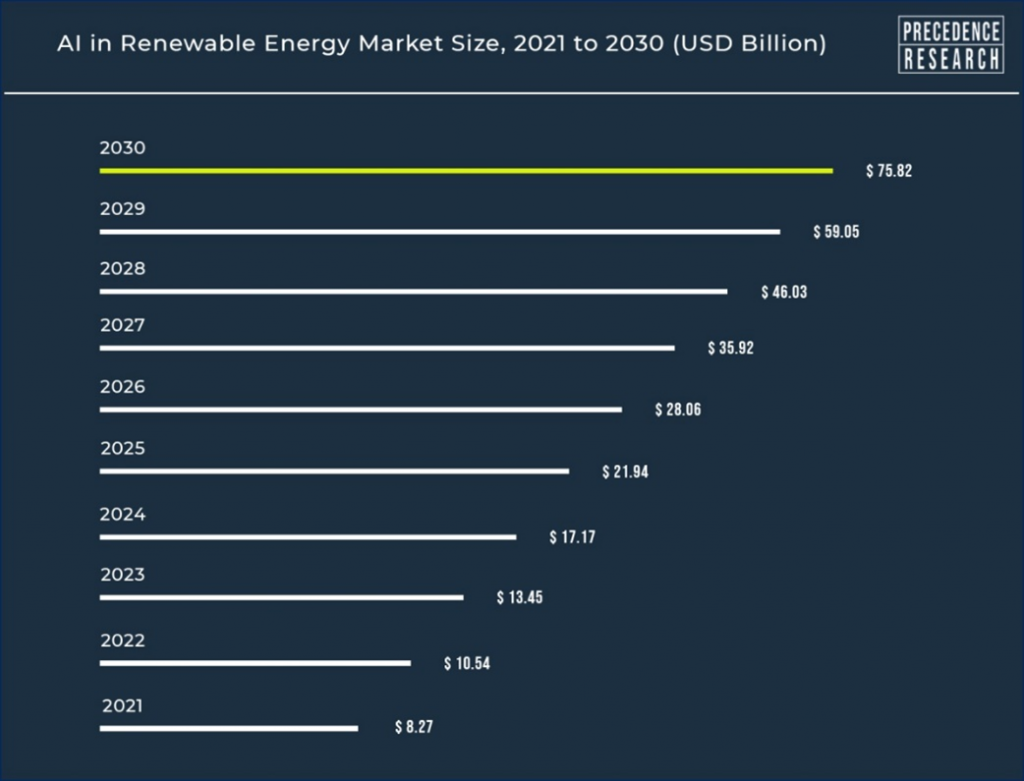2022 is a year of reckoning with energy demand back at pre-covid levels. There is a strong shift in power production with renewable energy sources gaining more traction and investment. Ample innovation is revolutionizing the industry, and here are the top 6 trends that are causing ripples in the renewable energy race in 2022.
Advanced Photovoltaics
Solar power generation models would need to occupy over 450,000 square kilometers of land if we were to fully power the world with it. This is about 0.3% of the earth’s total land area.

The focus now is on how to make solar power less space-intensive, so it can be accessible even in places where space is a precious commodity. This has resulted in the evolution of integrated PVs, Floatovoltaics, and Agrivoltaics.
Additionally, research is being done on making thinner, flexible solar panels, that are more cost and space effective and eco-friendly. Further, the energy conversion is set to improve with the use of PV materials like Perovskite. The materials being developed for this have a high refractive index, boosting the energy absorption and conversion, while also doubling as fluorescent markers at night. This brings into play where the solar panels can be put to aesthetic use like signages, boards, etc. Along with minimizing the need for space, it would promote large-scale sustainability, recycling, and minimum resource utilization.
Grid integration
Renewable energy production and the demand centers are located far from each other, resulting in high transmission and distribution losses. Grid integration is a key solution in combating this issue. Currently, grid electronic technologies like Gallium Nitride and Silicon Carbide are used to enable energy efficiency. Micro-controllers are employed to solve the voltage fluctuations and frequency changes.
The transportation industry is now tying up with the energy sector in developing Vehicle to Grid (V2G) technology that allows one to draw unused power from vehicles into the smart grid during peak hours. This results in grid stabilization when demand is high. The Nissan Leaf is a car model developed with Bi-directional energy flow for this purpose and its use is being tested in Danville, USA. The bi-directional flow also allows the vehicle to act as an energy storage device by tapping power back from the grid, through Grid to Vehicle technology.
AI and Big Data
AI and Big data have broken the barriers in many industries, and it’s not surprising that they would accelerate the energy race too. The investment in AI in the renewable energy sector alone is expected to surpass 75 Billion USD by 2030, driven by the growing need for Smart Energy Grids.

The energy grid is a complex infrastructure that churns out lot of data. This data when processed in the right way, can exponentially improve energy efficiency and open whitespace opportunities in energy production avenues. It has also brought about innovation with Virtual Power Plants (VPPs) that can supplement power production, through Cloud Computing.
AI is now extensively used in predicting power demand and in research in renewable energy models. Their performance can be tested using data prediction and simulation models, removing the high costs involved in actually building test models. This is extrapolated to technology where consumers and energy agencies can monitor consumption patterns in real-time. This data would be valuable in optimizing power production and consumption and supplementing with alternative energy sources for energy conservation in the future.
Distributed Energy Storage systems
There is a rampant irregularity in energy production from both renewable and conventional energy sources. With the development of Distributed Energy Storage Systems, Power agencies have been able to bring energy production and distribution closer to home. Research has produced a number of Battery and Batteryless solutions, with more focus on Batteryless products, as batteries come with the concerns of weight, safety, discharges, and proper disposal.
Startups are offering alternative storage options like Compressed air, Pumped hydro, etc which are environmentally safe. These storage are lightweight, space-efficient, and can even be put to domestic use. The cherry on top is that they can integrate with renewable energy. In addition to storage, other technologies like the conversion of surplus energy into other forms are being explored. This line of Reconversion tech, called Power to X Technology (P2X) is still in the developmental phase and offers good potential for investment.
Advanced Robotics
With AI in effect, Robotics was inevitable in the line of renewable energy trends. From the simple self-governing solar panels that orient themselves with the movement of the sun, to the super drones that monitor the blades of wind turbines, robotics has become key to automation in the renewable energy sector.
Automation in operations and maintenance in energy production has significantly improved safety and efficiency by minimizing human involvement. This is especially pertinent to worker safety as previously dangerous jobs like turbine inspection, dam inspection, etc… are now done by robots. The data collected from the inspection is used to run diagnostics and derive scalable solutions.
Besides this, there is a lot of repetitive maintenance work involved in renewable energy production like cleaning solar panels, wind and hydropower turbines, etc. Automation of these tasks using robots will free up manpower from mundane labor-intensive work, which can be redirected effectively. The maintenance efficiency also improves with minimal human intervention.
Blockchain
When the energy grids are converted to Smart grids, they are exposed to the risks of Cyber threats. Blockchain enables data encryption in energy operations and transactions. It also helps service providers keep track of the grid resources and the governing bodies to access data that assures them of regulatory compliance.

Blockchain has become the opening for Peer-to-Peer energy trading where the surplus energy is traded on the open market. It optimizes the trades for maximum return on investment for both providers and consumers.
It also evoked the Energy cryptocurrency market which also comes with a rewards system. When more individuals and agencies trade energy using these cryptocurrencies, they make more profits in the form of pertinent rewards. It is also promotional in nudging the shift to renewable energy both at individual and commercial scale.
Renewable energy is a vast ocean of possibilities and these trends are just a glimpse into its depths. More data-driven hardware and software solutions are being developed in real-time that will prove transformative to this sector in terms of energy generation, O&M, consumption, and trading. Talk to us today to know more about renewable power source, rooftop solar and latest trends on renewable energy innovation.




